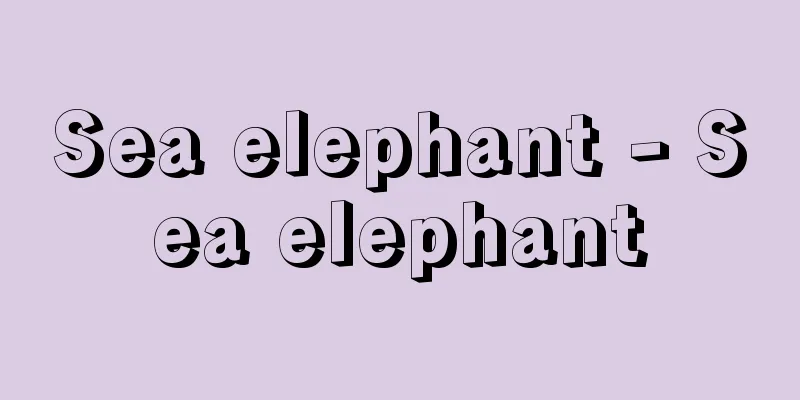Shinto Collection - Shintoshu

|
A collection of tales. It is said to have been written by Agui, but the specific editor is unknown. It was probably written in the latter half of the 14th century (during the Bunna and Enbun eras). It has 10 volumes and 50 articles. It describes the doctrine of honji suijaku, which is strongly influenced by Tendai Buddhism and Ise Shinto, and the honji buddhas of famous shrines. It focuses on shrines on the west side of the Tone River in Kozuke Province (Gunma Prefecture), such as Akagi, Ikaho, and Komochiyama Daimyojin, as well as the origins of suijaku and stories of the gods' previous lives (honjitan) for influential shrines with religious spheres in the Kanto region, such as Kumano, Izu-Hakone Nisho, and Suwa. These tales are valuable as they directly reflect local beliefs and folk customs, and were written before honjimono (such as "Kumano no Honji," "Gosuiden," "Mishima," and "Suwa no Honji") such as Muromachi Monogatari and Sekkyo Joruri were established as literary works. The honji tales in this book share a common concept that in order for gods to appear as merciful deities in a given land, they must have suffered hardships in their previous life while born into the human world, and a distinctive feature of these hardships is that many of these hardships are based on the motif of the sorrow of separation from blood relatives, mainly husband and wife (the pain of separation from loved ones). The Senmyo-style kanji writing has unique ateji characters and sentences that are common to the Manabon "Soga Monogatari," the Shibu Kassenjobon "Heike Monogatari," and "Heikazoku Densho," and it is assumed that the linguistic and religious areas of these works overlap, but the actual situation is not yet clear. There are old versions (such as the Akagi Bunko version) and popular versions (such as the Toyo Bunko version), and the latter have been refined and expanded to dilute the local color. [Murakami Manabu] "Shintoshu" translated by Masazo Takashi (Heibonsha, Toyo Bunko) Source: Shogakukan Encyclopedia Nipponica About Encyclopedia Nipponica Information | Legend |
|
説話集。「安居院(あぐい)作」と記してあるが、具体的な編者は不明。14世紀後半(文和(ぶんな)・延文(えんぶん)年間)の成立か。10巻50条。天台宗および伊勢(いせ)神道色の濃い本地垂迹(ほんじすいじゃく)の教義と、有名諸神社の本地仏を記してある。とくに赤城(あかぎ)・伊香保(いかほ)・児持山(こもちやま)大明神など上野(こうずけ)国(群馬県)の利根川(とねがわ)西側の神社を中心にして、ほかに熊野・伊豆箱根二所・諏訪(すわ)など関東地方に信仰圏を有した有力神社については垂迹の縁起および神々の前生物語(本地譚(ほんじたん))を記してある。それらは室町物語や説経浄瑠璃(じょうるり)などの本地物(『熊野の本地』『五衰殿(ごすいでん)』『みしま』『諏訪の本地』など)が文芸として成立する以前の、在地の信仰や民俗をそのまま反映した説話として貴重な存在である。本書の本地説話に共通する理念として、神々がその地に慈悲を垂れる神明として顕(あらわ)れるには、前生で人間界に生まれて苦難を受けることが必須(ひっす)とされ、それら苦難の多くが夫婦を中心とした肉親との別離の悲哀(愛別離苦)をモチーフとしている点が特色である。宣命(せんみょう)体風の漢字表記に、真名本(まなぼん)『曽我(そが)物語』や四部合戦状本『平家物語』、『平家族伝抄』と共通した特異な当て字と文章がみられ、それらと言語圏、信仰圏が重なると想像されているが、実態はまだ明らかでない。諸本に古本系(赤木文庫本など)と流布本(東洋文庫本など)があり、後者は整備敷衍(ふえん)されて地方色を薄めている。 [村上 学] 『貴志正造訳『神道集』(平凡社・東洋文庫)』 出典 小学館 日本大百科全書(ニッポニカ)日本大百科全書(ニッポニカ)について 情報 | 凡例 |
<<: Occupational vibration-induced disease
Recommend
Photoelasticity
Transparent plastics and glass do not exhibit bir...
Cato Major
…Roman statesman and writer. Known as Cato Major ...
Al-`Aqabah (English spelling)
A port city at the southern tip of Jordan. Located...
Emergence hormone - Ukahorumon
…The former is under the control of the prothorac...
Nuu tribe (Angry tribe) - Nuu (English spelling) Nù zú
One of China's ethnic minorities. They live ma...
Emil Zátopek
A Czech long-distance runner. At the 15th Olympic...
Kochiyaki
Sancai pottery from the late Ming Dynasty, fired ...
Wadatsumi Association - Wadatsumi Association
Another name for the Japan War Dead Students Memor...
Diplazium tomitaroanum (English spelling) Diplaziumtomitaroanum
…[Masahiro Kato]. . . *Some of the terminology th...
Drake, S.
…In the United States, a boat with stage equipmen...
Accounting chief
One of the positions within the Edo Shogunate'...
Amazonian manatee
...Except for Australia, it is a protected specie...
Seidenstrassen
…meaning “Silk Road.” The English name is based o...
local race
...Homogeneity is a comparative concept. There ar...
Felis geoffroyi (English spelling) Felisgeoffroyi
…[Tadaaki Imaizumi]. … *Some of the terminology t...









